Are you thinking about bringing injection molding in-house or just curious about what it takes? You might see the complex machinery and wonder if your team can handle it. The fear of costly mistakes, wasted materials, and production delays is real. I will break down the true difficulty, from basic tasks to expert-level skills, so you can clearly see what is involved.
Operating a plastic injection molding machine has a definite learning curve. The basics, like starting and stopping a pre-set cycle, are fairly simple to learn. However, mastering the machine to solve problems is much harder. This requires a deep understanding of plastics, mold design, and process settings to troubleshoot issues like flash, sink marks, or warpage. The real difficulty is not just running the machine, but becoming a technician who can optimize production and guarantee quality.
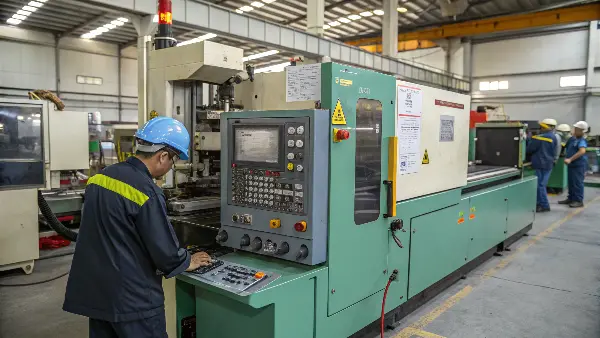
I’ve spent my entire career in the mold industry, from working on the factory floor to running my own company. I’ve seen firsthand what separates a simple machine operator from a true process technician. The difference is huge, and it directly impacts the quality of the parts and the profitability of the business. Let’s dig into the details so you can understand the challenges and opportunities. The path is long, but for those who are dedicated, it is incredibly rewarding.
Is injection molding difficult?
You see a perfectly formed plastic part, but you don’t see the complex process behind it. This makes it hard to know if injection molding is a simple "push-button" job or a demanding craft. You might underestimate the skill involved, leading to production issues or hiring the wrong people. Let’s look at the real difficulty level, separating the easy tasks from the truly challenging ones.
Yes, professional injection molding is difficult. The challenge goes far beyond just running the machine; it involves understanding the entire system. This includes how different plastics behave under intense heat and pressure, how the mold’s design affects the final part, and how to adjust dozens of parameters to fix defects. While a new operator can learn the basics in weeks, becoming an expert who ensures top quality and efficiency can take years of hands-on experience.
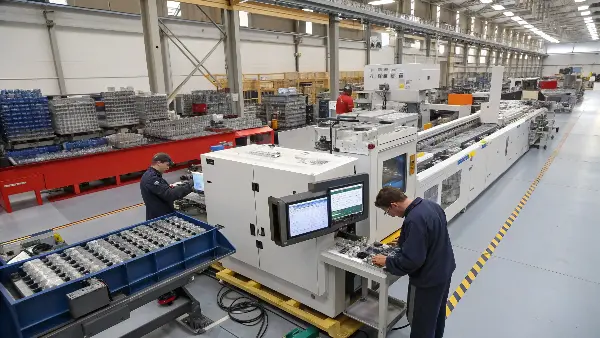
When I first started, my mentor told me something I’ll never forget: "Anyone can make a part. A professional makes the same good part, ten thousand times in a row." That really gets to the heart of the difficulty. It’s not about a single success; it’s about consistency, precision, and deep process knowledge.
The Difference Between an Operator and a Technician
The difficulty of injection molding depends entirely on the role. We can break it down into different levels of expertise. An operator’s job is very different from a process technician’s or an engineer’s.
-
The Operator: This is the entry-level position. An operator is mainly responsible for overseeing the machine’s automatic cycle. Their tasks include starting and stopping the machine, clearing any simple jams, removing finished parts, and performing basic visual inspections. They might also handle loading raw material into the hopper. This role is not mechanically intensive and can be learned relatively quickly. The difficulty here is low, but it requires attention to detail.
-
The Technician (or Setter): This is a much more skilled role. A technician sets up the molds in the machine, connects the water and hydraulic lines, and loads the correct program settings. They are the first line of defense when problems arise. If parts start showing defects like flash or sink marks, the technician makes adjustments to pressure, temperature, or speed to fix the issue. This requires a solid understanding of the machine’s functions and the molding process. The difficulty is moderate to high.
Key Areas of Difficulty
The real challenge in injection molding comes from the complex interaction between the machine, the mold, and the material. Mastering this requires more than just following a setup sheet. It requires understanding the "why" behind each setting. This is where I see many people struggle. They know which button to press but not why they are pressing it.
| Area of Expertise | What It Means in Practice | Why It’s Hard |
|---|---|---|
| Material Science | Knowing how different plastics (like ABS, PC, PP) melt, flow, and shrink. | Every plastic has a unique personality. Using the wrong temperature or pressure can ruin the material or the part. |
| Process Control | Understanding the relationship between injection speed, pressure, temperature, and cooling time. | These variables are all connected. Changing one can have an unexpected effect on another, requiring constant balancing. |
| Mold Function | Understanding how the mold’s gates, runners, vents, and cooling channels work. | A poorly designed or maintained mold can cause defects that no amount of machine adjustment can fix. |
| Troubleshooting | Diagnosing the root cause of a defect (e.g., flash, short shots, warping). | A single defect could have multiple possible causes. An expert must identify the most likely one and apply the correct fix efficiently. |
This journey from operator to expert is where the true difficulty lies. It’s a long road, demanding a deep curiosity about how things work.
How to operate a plastic injection molding machine step by step?
Standing in front of a modern injection molding machine can be intimidating. With all its buttons, screens, and powerful moving parts, you might not know where to even begin. The fear of breaking something expensive or, worse, causing an accident is completely understandable. I’ll walk you through the basic operational steps to demystify the process and show you how it works.
Operating an injection molding machine follows a clear sequence. First, complete all safety checks. Next, load the plastic pellets into the hopper. After starting the machine, the pre-programmed cycle begins automatically: the mold closes, plastic is injected, the part cools, the mold opens, and the part is ejected. The operator’s primary job is to monitor this cycle, remove the finished parts, and watch for any machine alarms or obvious defects in the products.
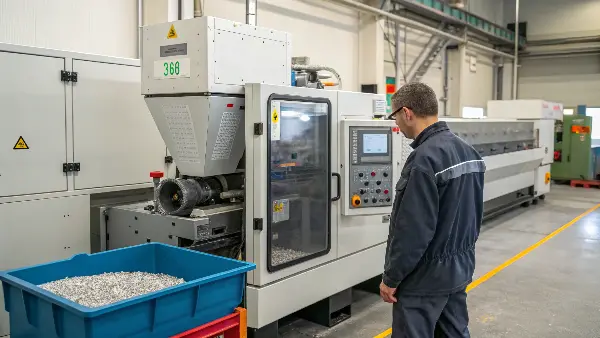
I remember my first day on the factory floor. I was terrified of the massive clamp unit moving with such force. My supervisor walked me through the safety interlocks, showing me how the machine absolutely will not operate if the safety gate is open. That simple lesson taught me that while these machines are powerful, they are built with safety as the top priority. Trust the process, but always respect the machine.
Step 1: Pre-Operation and Safety Checks
Before you even think about turning the machine on, safety comes first. This is a non-negotiable step.
- Personal Protective Equipment (PPE): Always wear safety glasses. Depending on the job, you might also need heat-resistant gloves.
- Machine Inspection: Walk around the machine. Check for any oil or water leaks. Ensure the safety gates are in place and function correctly. Make sure the area is clean and free of obstacles.
- Mold Check: Confirm that the correct mold is installed securely and that all connections (water, hydraulics, electrical) are properly hooked up.
Step 2: Loading Material and Starting the Machine
With safety checks done, it’s time to prepare the machine for production.
- Material Loading: Ensure the hopper is clean and then load it with the correct type and color of plastic pellets. Many factories use automatic loading systems.
- Turn on Heaters: The barrel of the machine, where the plastic melts, needs to reach a specific temperature. Turn on the barrel heaters and wait for them to reach the setpoint shown on the control screen. This can take some time.
- Start the Hydraulic Pump: Once the barrel is at temperature, you can turn on the machine’s motor or hydraulic pump. This provides the power for all machine movements.
Step 3: The Automatic Cycle in Detail
This is where the magic happens. Once you start the automatic cycle, the machine repeats these steps until you stop it.
| Phase of Cycle | What is Happening | Operator’s Role |
|---|---|---|
| 1. Mold Closing | The two halves of the mold are brought together under high pressure (clamping force). | Watch to ensure it closes smoothly. |
| 2. Injection | The screw inside the barrel pushes molten plastic into the closed mold cavity. | Monitor injection pressure and time on the screen. |
| 3. Packing/Holding | Extra pressure is applied to pack more material into the mold to compensate for shrinkage as it cools. | Monitor holding pressure. |
| 4. Cooling | The part is held in the mold while cooling channels with circulating water remove heat. This solidifies the part. | This is typically the longest part of the cycle. |
| 5. Mold Opening | The clamp releases, and the two halves of the mold separate. | Watch to ensure it opens smoothly. |
| 6. Ejection | Ejector pins push the finished part out of the mold, where it falls into a bin or is removed by a robot. | Remove the part and inspect it for defects. |
Step 4: Post-Operation and Shutdown
When the production run is complete, you must shut down the machine properly. This involves turning off the motor, purging any remaining plastic from the barrel, and turning off the heaters. A proper shutdown procedure is crucial for the machine’s longevity.
Is injection molding a good career?
Are you looking for a stable, hands-on career in manufacturing? You might worry that these jobs are disappearing or that you’ll be stuck in a low-paying role with no future. This uncertainty can make you hesitate before investing your time to learn a new trade. Let’s look at whether a career in injection molding provides the security, growth, and satisfaction you want.
Yes, injection molding is an excellent career path with high demand for skilled workers and great potential for growth. You can start as a machine operator and advance to roles like setup technician, process engineer, quality manager, or mold designer. Talented technicians are highly valued because they directly improve a company’s profit and product quality. The career offers a rewarding mix of hands-on work and technical problem-solving.
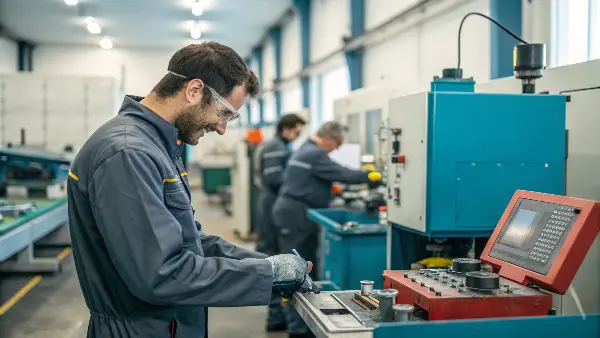
For a business owner, having a clear career path for employees is key to keeping good people. When I ran my trading company, I saw this with my clients. The factories that trained and promoted their staff from within had the most loyal and motivated teams. When operators can see a future for themselves as technicians or engineers, they become invested in the company’s success. It creates a culture of excellence.
The Path to Advancement
A career in injection molding isn’t a dead end; it’s a ladder. You can start with very little experience and climb as high as your ambition and skills will take you.
-
Entry-Level Role: Machine Operator. As we discussed, this role focuses on running the machine on its automatic cycle and inspecting parts. It’s the perfect starting point to learn the basics and rhythms of a factory.
-
Next Step: Material Handler or Quality Inspector. These roles are specializations. A material handler becomes an expert on different types of plastics, managing drying and blending. A quality inspector learns to use precision measurement tools to ensure parts meet specifications.
-
Skilled Role: Setup Technician / Process Technician. This is a huge leap in responsibility and pay. You become the person who sets up the jobs and solves problems. You are the "doctor" for the molding process. This is the most in-demand role in most molding factories.
-
Advanced Roles: Process Engineer, Tooling Engineer, or Supervisor. With years of experience, you can move into engineering or management. Process engineers design and optimize molding processes for new products. Tooling engineers work on the design and maintenance of the molds themselves. Supervisors manage teams of operators and technicians.
Skills That Make You More Valuable
To climb this ladder, you need to be a lifelong learner. The technology is always changing.
| Career Stage | Key Responsibilities | Skills to Develop |
|---|---|---|
| Operator | Run machine, inspect parts | Attention to detail, consistency, safety awareness |
| Technician | Set up molds, troubleshoot defects | Mechanical aptitude, problem-solving, process parameter knowledge |
| Engineer | Develop new processes, manage projects | Advanced material science, mold design principles, data analysis, robotics/automation |
| Manager | Lead teams, manage production schedules | Leadership, communication, financial planning |
The industry is moving towards more automation and data-driven manufacturing (Industry 4.0). Learning about robotics, statistical process control (SPC), and new, advanced materials will make you incredibly valuable.
Is plastic injection molding profitable?
You are a business owner, and you’re considering investing in injection molding. The high cost of the machines and especially the molds is a major factor. You worry that you might not see a return on that investment, which could put your company’s finances at risk. I’ll break down the factors that drive profitability so you can understand how to make injection molding work for you.
Yes, plastic injection molding can be extremely profitable, but success depends on high volume and efficiency. The initial investment in machinery and molds is significant. Profitability is achieved by producing a large number of parts very quickly and with minimal waste. The keys to success are optimizing cycle times, using automation, reducing scrap rates, and securing high-volume production runs. For the right products, it is one of the most cost-effective manufacturing methods available.
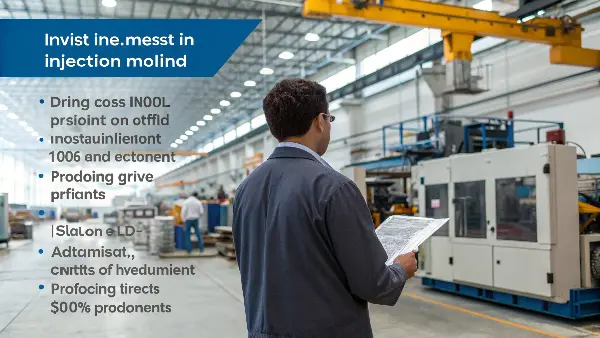
This is where skilled people become a company’s greatest asset. A good technician can pay for themselves many times over. I’ve seen it happen. Shaving just two seconds off a 30-second cycle time on a run of one million parts saves over 150 hours of machine time. When you calculate the machine’s hourly rate, that saved time translates directly into thousands of dollars of pure profit.
The Initial Investment: Molds and Machines
There’s no way around it: getting started is expensive.
- Injection Molding Machine: A new machine can cost anywhere from $50,000 to over $500,000, depending on its size (clamping force) and technology (hydraulic, all-electric).
- Injection Mold (Tooling): This is often the biggest cost. A simple, single-cavity mold might cost $5,000, while a complex, multi-cavity, high-production mold for a car part could cost over $100,000.
- Auxiliary Equipment: You’ll also need dryers for the plastic, temperature controllers for the mold, grinders for recycling scrap, and possibly robots.
Key Drivers of Profitability
Once you’ve made the investment, profit is made by managing your variable costs and maximizing output.
| Profit Driver | How It Works | Impact on Bottom Line |
|---|---|---|
| Cycle Time | The total time it takes to make one part (or set of parts). | The faster the cycle, the more parts you make per hour, lowering the cost per part. |
| Number of Cavities | How many parts the mold makes in a single cycle. | A 4-cavity mold produces four times the parts of a 1-cavity mold in roughly the same cycle time. |
| Scrap Rate | The percentage of parts that are defective and must be thrown away or reground. | Lower scrap means less wasted material, time, and energy. A target is often less than 1%. |
| Machine Uptime | The percentage of time the machine is actually running and making good parts. | Minimizing downtime for setups, maintenance, and repairs is crucial. Automation helps here. |
Where Things Can Go Wrong (And Hurt Profits)
Profitability can disappear quickly if things are not managed well. Common profit killers include excessively long cycle times, high scrap rates due to unresolved defects, and frequent machine downtime. All of these issues point back to a lack of process control and expertise. This is why investing in training and retaining skilled technicians is just as important as investing in good machinery. For a business owner, controlling these factors is the key to turning a large capital investment into a reliable source of profit.
Conclusion
So, how hard is it? Operating the machine on a basic level is not very difficult. The real challenge, and where the value lies, is in mastering the process. It demands a deep understanding of materials, machines, and molds to solve complex problems and produce perfect parts consistently. It’s a craft that combines science with hands-on skill. The path is demanding, but for individuals seeking a great career and businesses aiming for profitability, mastering it is absolutely worth the effort.
